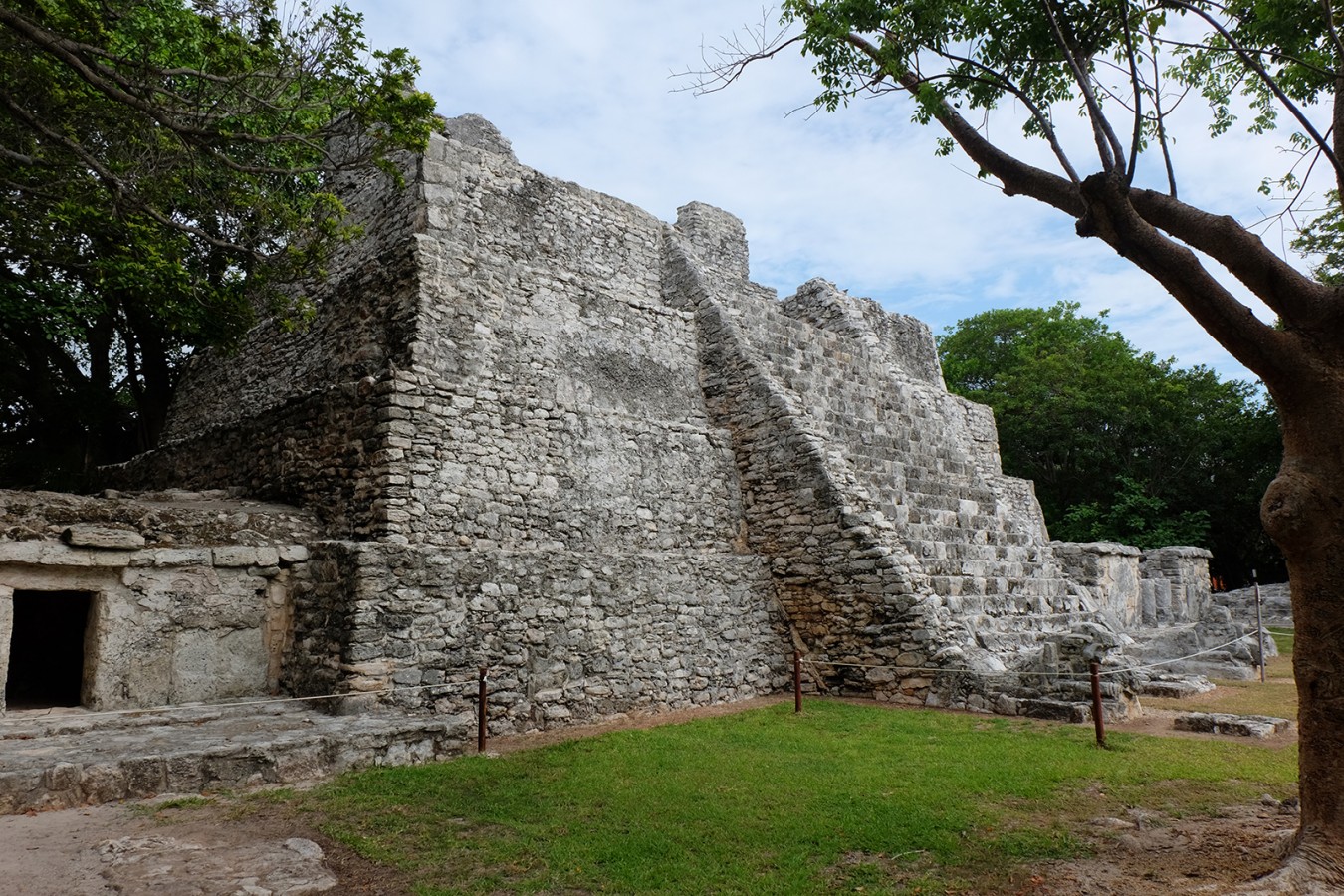Without doubt Building 1, more commonly known as El Castillo (“The Castle”) is the most important building on the El Meco archeological site. It was documented for the first time by Augustus and Alice Le Plongeon in 1877, and subsequently by Teobert Maler in 1891. The latter described the serpent’s heads at the foot of the balustrades, which inevitably bring to mind the rather larger versions at El Castillo in Chichen Itza. Maler also mentioned that an older building could be seen at the rear.
William Holmes visited El Meco in 1895 as part of Allison V. Armour’s expedition and he recorded more detailed descriptions of the central building and other principal structures. Some time after, Arnold Channing and Frederick J. Tabor Frost came to the site in 1909 and documented the pyramid in detail. Samuel K. Lothrop came with the members of a new expedition from the Carnegie Institution of Washington in 1918. He surveyed El Castillo, which by that time had been cleaned and whitewashed by the Mexican government in order to function as a boundary.
Around this same time, local inhabitants dynamited the back of the building to obtain stone for construction, thus exposing the majority of the substructure and destroying the facade of the temple above. Lothrop recognized that the building was erected over various phases of construction and that the style of the architecture had similarities to Tulum and other sites in the region, leading him to propose a distinctive "east coast” style, a term which is still in use today. Another member of the Carnegie expedition, Thomas Gann, was one of the first to suggest that the “castles” of El Meco and Tulum had been pilgrimage sites, a notion which took hold among twentieth-century archeologists.
The first archeological excavations at El Meco were carried out by William T. Sanders between 1955 and 1960, and they were continued by INAH staff in the 1970s, with Peter Schmidt leading the work on El Castillo. The conservation and strengthening of this building and of the principal group continued from 1979-80 under Elia Trejo and Rocío González. Luis Leira was involved in the 1990s, and it was then that the site finally opened to visitors.
Structure 1, or El Castillo, is not only important as El Meco’s most conspicuous building, and the tallest on the east coast, but because of its interest to architectural research in the Quintana Roo region. It is one of the few pyramids built during the Late Postclassic, a period in which emphasis was given to structures with columns and flat roofs and to palaces with two rooms and a porticoed entrance. Even more noteworthy is the fact that the first stage of this pyramid might have been built on a similar pattern in the Early Postclassic (1000-1250 AD). Information about the architecture of this period in the region is lacking. In fact there are only four known pyramids built in the Late Postclassic: one at San Miguelito, another at El Rey, El Castillo in Tulum and the one that concerns us here. Other examples of temples on bases built over older structures can be seen at Coba.
The plinth of Structure 1 at El Meco consists of four sections and a small platform from which a two-roomed temple rises. This had three entrances marked by two columns, possibly overlooked by niches. The faces of the plinth are smooth and vertical, unlike those from previous periods, and this characteristic is only shared with the plinths at San Miguelito and El Rey, but these are not so tall. It is interesting to point out that El Castillo in Tulum has a very different design, since its location took advantage of an older columned palace, which was used in place of the plinth.
El Castillo at El Meco is the sole Postclassic pyramidal building whose facade faces the sea and the dawn; it also looks right at the southern tip of Isla Mujeres where a building was erected in the same period, and which certainly had some link of a symbolic and ideological nature. Without doubt, this building and the El Meco group generally are especially interesting because of the architectural arrangement and the beauty of the setting.
Any visitor interested in finding out about the ancient history of Cancun and its area of influence will certainly enjoy the experience of a tour of El Meco.







